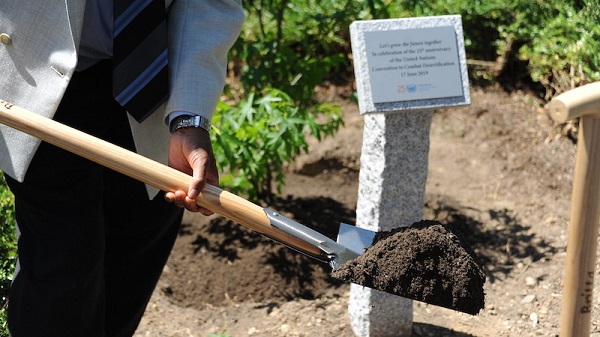The Newstart system for supporting the unemployed comes with a number of important problems including not providing enough support during a time of need and other problems with the system that discourage saving, accepting jobs and/or trying to start a business.
This post looks at some of these problems, the underlying reasons that contribute to these problems and incremental ways of improving the current system. Other posts in this series will look at more radical solutions including the use of approaches based on a Universal Basic Income (UBI), Universal Basic Loans (UBL), Welfare as a Loan, and/or Reverse Taxation.
This post concluded that there is currently too much emphasis on making sure people don’t get more than they need and not enough emphasis on being fair and providing adequate help during people’s unemployment crisis. The situation is not helped by governments who want to blame the unemployed for unemployment.
It also is worth noting that the shortage of work that causes unemployment also creates opportunities. It may make more sense for some Newstart funds to be used to encourage people with jobs to take a break to do things like gain qualifications, try and start a new business and/or participate in volunteer projects. The vacancies created could help people who really need a job right now.
NOTES:
-
Except where noted:
-
-
Figures used applied at March 2018.
-
Details apply to a single person.
-
The minimum weekly wage is based on a 38 hr week. ($695/week)
-
Welfare as a Loan is mentioned in a number places below. The basic idea is to replace welfare as a gift with a HECs style loan that starts being repaid when the crisis requiring help has passed. Welfare as a loan will be discussed in more detail in a later post.
DETAILS:
At the time of writing (March 2018) Newstart paid a single person $273 per week. This allowance starts to be clawed back when other income averages $52 per week for the previous fortnight and disappears when other income reaches $527 per week. (The tax free threshold is $349 per week )
The payments may start immediately for some applicants but may be delayed if the applicant has more than $5500 in fluid assets or if “the applicant or their partner have finished seasonal, contract or intermittent work within 6 months of submitting the claim.”
Two people who have been determined to be “partnered” get $27 per week less each compared to people who are “unpartnered” if their earnings are the same. However, if their earnings are different they may actually benefit because their earnings are averaged.
NOTES:
-
The above is an overview. Actual payments may depend on assets, children, carer status etc. and will change with time. Important to check the Newstart page if Newstart could affect you or your friends. In some cases there will be exemptions and waivers that apply if you are experiencing hardship or other exemptions apply.
-
Keep in mind that many of those who have been unemployed for over one year will still be actively seeking work but find it hard to get jobs because they have the wrong skills, wrong age, poor health, live in the wrong place etc.
Problems With Newstart
Problems found included:
-
Payments are too low: Even John Howard agrees that Newstart allowances are too low for a person caught up in an unemployment crisis. The unindexed single persons payment of $273 per week is only 39% of the minimum weekly wage. The Newstart allowance has been frozen for over 8 years
Suggested action:
-
Defining Partners: A couple who are defined as partners by Centerlink get lower Newstart payments than singles but, under some circumstances, may benefit from having their income averaged for clawback calculations. Part of the problem these days, is that “partners” can range from a married couple that shares all assets and income to “partners” whose emotional and financial commitment is much harder to define. (In an article “Judging politics by Centrelink’s Rules” Mike Belcombe in The Saturday Paper of April 28 to 4 May 4, 2018 had this to say on Centrelink’s partnering rules: “You don’t have to be married to be considered part of a couple. You can be in a defacto relationship or “multiple relationship” to be deemed defacto. You don’t even have to physically live with you partner….five main factors are considered. These are…..the financial aspects of your relationship; the nature of your household; social aspects of your relationship; if you have a sexual relationship; nature of your commitment to each other.” And, it goes on to says: “We can decide you’re a member of a couple even if all these factors aren’t part of your relationship.”
Comment: When it comes to welfare calculations the government wants to treat “partners” as a single economic unit. By contrast, when it comes to taxation, they want to largely tax the partners as separate individuals to increase the tax take from PAYE taxpayers and others who can’t do things to average the partners earnings.
Suggested action:
-
-
The fairest outcome would be to allow couples who are married or in an equivalent “registered relationship” to have their incomes averaged for both tax and welfare purposes. Ideally, the gain/pain due to income averaging should be shared equally between the partners. In addition, for a period after a partnership beaks up Centrelink should be able to claim back from the richer partner some or all of any Newstart allowance paid to the poorer partner. Or
-
Partners could be treated as though they are independent singles when determining what Newstart allowance they should get. (Partners who don’t really need the Newstart allowance will probably get sick of having to prove they are seeking a job or being required work for the dole.) Making the allowance a loan would provide an additional incentive for a dependant partner not to seek the Newstart allowance.
-
Clawback: Unemployment payments are reduced if a single recipient earns more than a very small amount. For Newstart, the benefit for a single person would be reduced by 50 cents for every dollar earned above $52 per week (averaged over 2 weeks) and 60cents for every dollar earned above $127 per week. The Newstart allowance drops to zero when other income reaches $527 per week. (March 2018) To put this in context, someone receiving the current minimum wage could earn $52 in less than 3 hrs. and the marginal tax rate for someone earning over $180,000p.a. is 47% including medicare. My understanding is that someone whose other income varies from fortnight to fortnight will, all else being equal, receive less on average than someone whose other income remains the same from fortnight to fortnight.
Part of the problem here is that the minimum wage is so low that there should never be much difference between the base Newstart allowance and the minimum wage. As a result clawback is always going to be high unless the base Newstart is too low or Newstart payments are going to continue well past the minimum weekly wage. If we have to choose it is better to have a high base Newstart and put up with heavy clawback.
Clawback also discourages people from trying to make some money from small business activities. Comments from friends on part pension suggest that the clawback system struggles to cope with expenses and income that may vary substantially from week to week. (Confusing Centerlink rules and harassment were the main reason these friends decided not to proceed with the small business.)
Suggested actions:
-
-
Increase the other income that can be earned before Newstart cuts out.
-
Consider starting Newstart with a few thousand dollars limit on other income before clawback starts. (Encourages people new to Newstart to look for temporary work.)
-
Increase the Newstart allowance.
-
Adjust clawback so that Newstart payments drop to zero when other earnings reach at least the minimum wage.
-
Increase the minimum wage.
-
Adjust the system so that people whose other income varies are not disadvantaged compared with someone who gets a steady other income. (If required.)
-
Delays before unemployment payments start include:
-
-
Liquid Asset Waiting period: “Liquid assets are any funds readily available to you or your partner. This includes money your employer owes you.” If liquid assets exceed $5500 a single person will have to wait one extra week for every $500 increase in liquid assets until the max waiting period of 13 weeks is reached when liquid assets reach $11,500. (By contrast, a single person who doesn’t own a home and has fixed assets below $456,770 can still get Newstart. ($456,770 is enough to pay the basic Newstart allowance of $273 per week for 32 years!)
Someone who who has just lost their job may be facing financial stress from having to move to lower cost accommodation, not knowing where to get additional help and problems with loan repayments.
Suggested Actions:
-
Substantially increase the liquid asset levels that are required to increase waiting periods.
-
Subtract outstanding debts when calculating the liquid asset figure used to set waiting periods.
-
Don’t distinguish between fixed and fluid assets when determining eligibility for Newstart waiting period. (But, for fixed assets, consider offering Newstart loans) secured by the fixed assets as an alternative to Newstart.
-
Unemployment Non Payment Period rules say:“If you choose to leave your job or lose your job because of misconduct, we may not pay you for 8 weeks, or 12 weeks if you got relocation assistance from your provider.” The problem here is that these rules can act as a disincentive to take jobs Newstart receivers don’t know much about. (Newstart receivers fear they will be stuck with a rotten jobs in rotten places with rotten bosses and not have the funds to live through 8 weeks with no income.) There have certainly been stories about some Newstart receivers who never stay in any job for very long. From an incentive to work point of view it may be smarter to tolerate some resignations before tightening the rules. (There is some discretion available in cases of resignations but Newstart receivers may not always trust the system to be fair.)
Suggested actions:
-
Only apply a non-payment period if people resign from a job before they have worked say 2 months?
-
Tolerate a certain number of resignations before starting non-payment periods.
-
Keep a record of employers who generate a lot of resignations, look for common reasons and cancel the unemployment non payment rules for work done for these problem employers/jobs/locations.
-
Seasonal Work Exclusion Waiting Period rules say: “If you or your partner have finished doing seasonal, contract or casual work in the 6 months before you claim, you may need to wait for a period of time before you can receive your payment. The seasonal work exclusion period will depend on how much you earned from your work and how long you were working for. The duration is based on how long it would take an average wage earner to earn the same amount as a person engaged in contract, seasonal or casual work.”
This rule is trying deal with a situation where the amount of work, income and expenses can vary substantially over the year for both businesses and individual workers.
In some cases it is not reasonable for the worker or business owner to expect Newstart during the times when they are not earning because their total income over the year is well above the minimum annual wage.
In other cases, such as fruit picking, the pay rate or hours of work they get over a year may be much less.
“Fruits of their labour” Q WEEKEND June 9, 2018 included some data for Pacific Islander fruit pickers working in Qld. Key figures for a 6 month picking season ($22/hr with 30 hr per week guarantee, average spending $8000) . If an Australian got these conditions working for 26 weeks and was unable to get work outside the 26 weeks:
Newstart now has a Seasonal work incentives trial that will allow some workers who have been on Newstart for at least 3 months to earn $5000 before Newstart reductions start. This could reduce the Newstart loss above by $2068 and boost the amount remaining to $4130.
Keep in mind that it will be difficult for a fruit picker to continue chasing a permanent job while working as a fruit picker. Also keep in mind that it may take time after returning from the picking job to find low cost accommodation.
It would be very easy for a picker to end up out of pocket or otherwise disadvantaged compared with someone who stayed in the city to chase work and short term casual jobs.
NOTE: As far as I could see someone who loses a permanent job is not subjected to the seasonal work exclusion period. Hardly passes the fairness test.
Suggested Actions:
-
No waiting time for those who have averaged less that minimum weekly award wage for less than 38 hr week.
-
Treat people who have lost a permanent job the same as those who have finished 6 months (or year?) of irregular work.
-
Make any waiting time dependant on earnings for last 6 months.
-
People who face financial crisis during waiting period should have access to loans.
-
Training and further education: The current system encourages people to take short training courses. In some cases it may make more sense to provide income support for longer courses that may make real differences to people’s employability and potential contribution to society. This may include supporting people who leave a job to improve their qualifications.
Suggested Action: Start seeing our chronic high unemployment levels as an opportunity to increase Australia’s education and skill levels without creating labour shortages or increasing Newstart costs.
NOTE: Also an opportunity to use surplus labour to volunteer or try to start a business.
-
Mutual Obligations: These complex obligations set out what a Newstart recipient has to do to convince the Newstart system that they are making a reasonable effort to find a new job. It is a bit hard to work out the extent to which these requirements and the associated financial punishments actually help people on Newstart get an appropriate job that uses their skills and aptitudes.
It is worth noting that “Is harassing the unemployed justified?” found that: “For financial years 06/07 to 10/11 only 14 to 19% of the unemployed had been unemployed for over one year and 50 to 58% had been unemployed for less than 13 weeks.” This suggests that the vast majority of the unemployed are actively seeking work and would find the government’s vilification and harassment a distraction. It is also worth asking whether all of the employers that people who are being forced to accept work from pay award wages and have adequate safety programs. The following links highlight the result of harsh punishments on some schemes targeted at Aborigines.
Aboriginal people say CDP pushing people into further poverty
Suggested Actions:
-
Delay the start of most mutual obligations for people who haven’t been a problem before. For the first 3 months encourage these people to concentrate on getting work that uses their skills and aptitudes and/or bringing qualifications up to date.
-
Reduce financial penalties or, better still, offer incentives to conforming.
-
Check that employers pay award wages and have appropriate safety programs before insisting people accept jobs.
DISCUSSION:
We have Newstart because, as a society, we have decided to deal with our chronic shortage of work by encouraging most of the workforce to work the same or longer hours than they have traditionally worked while others are forced into the pools of unemployed or under employed.
We also have Newstart because our economic and financial systems are doing a poor job of facilitating the exchange between those that have something to sell and those who want the product and are willing to work or trade to get the product.
Newstart is a not very effective band aid that has to deal with societies inability to share the available work and the failings of our economic and financial systems.
To make matters worse Newstart has to operate in a difficult environment that is getting more and more difficult. For example:
-
Both government and opposition want to blame the unemployed for unemployment and put too much emphasis on minimising the cost of unemployment welfare and not enough on making people more employable.
-
We have reached a point where less than half of all working Australians have a permanent full-time job with leave entitlements. This combined with the growth of jobs that may be paid less than the minimum award rate increase the number of people who will be paid less than the Newstart cut-off from time to time but not all the time.
-
The minimum award wage for a 38 hr week is not all that far above what it costs for basic living requirements. (This means that clawback has to be savage unless the government is willing to pay some Newstart to people earning more than the basic wage.)
The focus of this post has been on the Newstart welfare system. However, while welfare helps reduce the pain of unemployment it does nothing about fixing the basic problems:
-
Chronic high levels of unemployment driven by a chronic shortage of work.
-
Failure to share the available work.
It is worth noting that “Is harassing the unemployed justified?” found that: “For financial years 06/07 to 10/11 only 14 to 19% of the unemployed had been unemployed for over one year and 50 to 58% had been unemployed for less than 13 weeks.” DO A CHURN CALCULATION
Relevant Links:
ABC News 7 June 2018: Full time work hits new low as casual work takes over
Men are dropping out of workforce while women charge in
Workers’ compensation doesn’t cover gig workers – here’s a way to protect them










